Vintage Y2K behind the scenes content sometimes served with a side of hindsight. My own early 2000s creative projects will be featured here as they are of the Myspace and Tumblr era. People interested in the music of Le Mans were 100% of my online following. Not anymore, of course. However, Leon Kennedy and Demolition Lovers will make appearnces as they literally display my DNA.Jamisin Matthews avatar illustration by punktatortot on ig
Don't wanna be here? Send us removal request.
Text
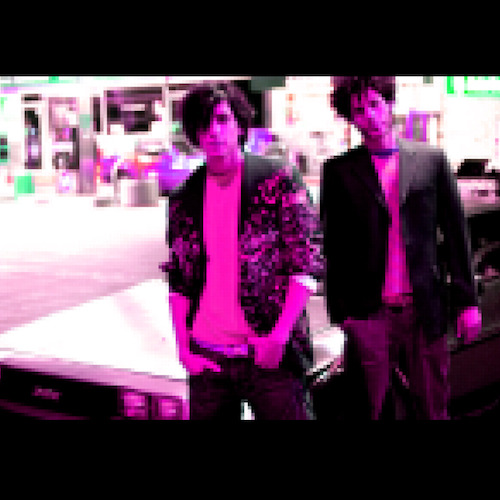
So here's another photo from the shoot employing the pixelization and magenta tint effects I mentioned.
For the Coldlife in the Fastlane album shoot, I employ the talented Jason Kim to capture the right vibe which at this point, is the world of "Citi de Frag" and "Deux Flics." So night drives, time travel, cops, robbers, cars etc. Though still influenced by the Brooklynification of pre-hipster fashion at the time, it's apparent that the MTV cops in blazers and t-shirts is the key fit. And, while I consider a couple different vehicles for this simulation, what better in-your-face car to prowl the retro nostalgic Tron grid than one of the most unloved vehicles of the early 2000s, a weathered Delorean.
Anyone looking at this after 2010 or so may thing it's an obvious combination of themes. Just look at any retrowave and synthwave artwork that isn't vaporwave-or "Drive" and "Kung Fury". But at the time it is anything but that. There is no existing home or scene for it. I am lucky that the established electroclash people could at least see it as a sort of gritty evolution of their own Liquid Sky aesthetic.
But the specific mashup of neon fonts, magenta/cyan, night drives, old sports cars, Miami/LA landscapes, DeLoreans, adorning the landscape of the afore mentioned Miam Vice type cops traversing time etc are just not appreciated by any mainstream entity. As mentioned, there are callbacks to 1980s in the 2003 underground, but they are either overtly ironic (as in electroclash) or more singular (like the lowbit imagery of the micro music scene). I add bit of earnestness and flesh out a more cinematic universe that doesn't really have a home.
The photo above, along with two others, appear inside the cd insert just above the album credits and information. They imply the noir night vibe with the additional two photos featuring a femme fatale (my friend, Pia lighting a cigarette) and another of the DeLorean. I apply the magenta overlay on everything and including the DeLorean wheel I use as the image on the actual cd.
The front cover features the zoomed in and cropped shot of the protagonists in and open-to-interpretation action with the DeLorean and palm tree behind them. The cover photo receives a less intense magenta overlay along with the neon lightbulb font because I want people to be able to see it better.
(Fast forward to 2024: For the 20th anniversary Recording the Masters "Coldlife in the Fastlane" variant, I ditch the typography and dial up the overlay saturation. Just a alternative universe dialog with the original cover. The Deux Flics Dolby variant is an all new design but still incorporates the integral 2003 photographs)

The back cover features the DeLorean photographed from the rear with "LE MANS" on the license plate-again pixelated and with a magenta overlay. This artwork along with the non-indiesleaze lyrical themes of dangerous cyber pursuits, retro tech, and unexpected references to horror/zombies/90s/ pretty much pave the way for future synth bands who want to differentiate from the concurrent electro scene which remains very electronic, but evolves along a more party-oriented vibe (Steve Aoki, Kesha, Uffie etc).
By the second LeMans album, "Disco Related Injury", I myself move away from many of these aesthetic choices and into a more comic book darkwave realm.
Interestingly, some tracks like "After Werk," which was the first song written for the album echo back to the more sleazy roots. It's fitting that this song features 1/2 of Electroboobies who I consider THE dj duo to anchor the 2000s underground scene on the West Coast before in moved to Hollywood. And, is mixed by Barbeau of Dirty Sanchez who can claim a spot on almost anyone's top electroclash songs of all time playlist with "Fuckin on the Dance Floor."
1 note
·
View note
Text






Here are some behind the scenes photos from the Coldlife in the Fastlane photoshoot by Jason S. Kim. With everything moving forward in late 2003, I realize I have no promotional photos. From my experience working at record labels, I know that to promote the music and compliment the retro-future world described in the lyrics I need some visuals.
While the 8-bit visuals of the chiptunes scene and the ironic disco flashdance looks of the electroclash clubs were also mining the aesthetics of 20 years before, I notice there is no one doing a "serious" homage to the early mid 1980s--a sort of cinematic less openly-ironic high stakes approach I introduced in the anchor of this endeavor, "Citi de Frag."
The lyrics in the vocoded version of the song on the album describe a late night pursuit involving a heist under the neon lights of downtown Los Angeles. Even the original instrumental non-vocoder version of Citi de Frag (which appears on the 20th anniversary 2024 CITF cassette Deux Flic Dolby variant) features the artificial gps voice (this was newish tech in 2003 as I often sprinkle new tech into retro themes and vice versa).
While there are nods to the fashion of the latter scene like the pink belt, for instance, I wardrobe us to achieve that tropical Miami Vice/Michael Mann cinematic detective vibe, but with a little more street flavor. Though not trying to mix too many pop culture references, I take a chance in incorporating a DeLorean as our car instead of my original first choice--a Pontiac Fiero.
And not for the reasons people would think.
Back to the Future has nothing to do directly with CITF (except for possible time travel if people want to perceive it that way). My main reason for featuring a DeLorean is because I realize while planning the shoot that I need something to honor the spaceship gold and silver metal aesthetic often incorporated by the French House duo Daft Punk, who are that unexpected anachronistic 1990s influence (explained in a previous post) on Coldlife in the Fastlane's deceptively 1980s production. This inaugural Miami Vice x Delorean mix (as well as 90s French House mixed with 80s synths) would catch on and become one of the most recognizable mashups of visuals for years to come.
In the next post, I'll detail the design of the album artwork, but for now, you can see how the first Le Mans logo originates. Night time neon environments are integral to a few of my projects. The original Le Mans logo is just a neon bulb font in the magenta cyan colorway mentioned in a previous post. I create this graphic below in 2003 for a shirt print. I do not know how to do transparent background pngs yet! Also notice the driving theme persists with the tachometer in the background. I change RPM to BPM by grabbing a piece of the R and pasting it.

#2000s#1980s#synthwave#retrowave#80s#90s#electroclash#vintage#scene#delorean#miami vice#nostolgia#daft punk#cassette#cassette tape#jamisin#Jamisin Matthews
1 note
·
View note
Text

About midway through producing the recordings which would become "Coldlife in the Fastlane," I realize I have to create the visual aesthetic. The retro futuristic vibe of the unfinished songs offers the foundation.
Up until this point, I employed the handful photographs that came free with Microsoft Windows. They synced perfectly with the L.A. and Miami themes because many of them feature palm trees and sunsets. Alot of people used these images as generic placeholders in the y2k era because access to quality photo libraries was limited and not everyone had a scanner.
To manipulate photos, I use a free graphic design program that comes with my printer. I don't even know if it is equivalent to MS Paint, but I am able to learn it. Adding text, cropping, and resizing are pretty much what I can do. And though very humble software, it's much more advanced than the IRL cutting and pasting I did when promoting well known bands in the late 1990s.
There is one feature I fall in love with, however. I am able to overlay a handful of colored filters. The classic early 1980s computer colors are magenta and cyan. The cyan isn't quite bold enough, so I go with magenta on everything. I also discover I can pixelate images by downsizing them, saving, and then over enlarging them. Project layers do not exist, so I save every image with its effects baked in after each change.
Those of you who bought "Coldlife in the Fastlane" CDs in 2004, you your'e familiar with the final version of the Delorean (more on that photoshoot in the next post) with Le Mans license plate image above as it was the background of the back cover of the CD artwork. This picture above is at the midway point, before I pixelated/downrezzed it and added text etc.
You'll notice the black bars at the top and bottom of the image. This was a trend (also seen on the bootleg CD a few posts back) of the moment based on the black bars we experienced on our 4:3 ratio television screens as they played back HD and widescreen proportioned video. More than a handful of bands I knew at the time incorporated this phenomena into promotional material.
Currently, filmmakers present content that is supposed to appear vintage in 4:3 and when we watch it on our HD proportioned screens, there are black bars on the sides. Similar effect.
#2000s#retrowave#1980s#electroclash#synthwave#vhs aesthetic#outrun#glitch art#microsoft windows#mspaint#retro tech
0 notes
Text
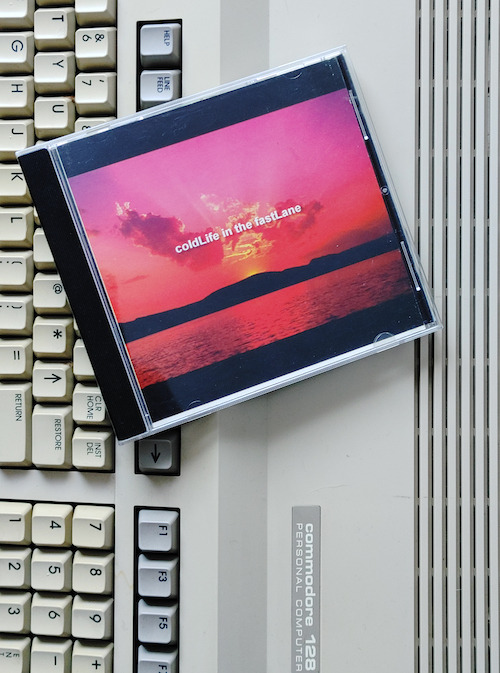
So, with two versions "Citi de Frag" getting a good response on early streaming sites and in the wild, I decide to create a whole ecosystem. (I had done something similar with SinTex a few years earlier referencing late 1970s and mid 1990s country pop culture along with 8bit cowboy video games). And, since I was obsessed with Miami Vice reruns on cable, I decide to write "Deux Flics" as an homage to that not-yet -retrocool cultural moment. "Deux Flics a Miami" is the name of the television series in France. Not surprisingly, outside of the United States, Le Mans' fan support and awareness was coming from France.
On "Deux Flics", instead of name-dropping the streets of downtown Los Angeles a la "Citi de Frag,", I reference the deco environs of our East coast sister city, Miami. I had actually lived in Florida, another warm locale populated with palm tree lined streets, previously.
The juxtaposition of the cold artificial sound of my music and the warmer locals, palm trees, and "pink sunrises" I reference in the lyrics is intentional--a contrast to the more oft-cited Berlin and New York nightscapes which were prevalent in the electroclash of the earlier 2000s. The sleaze factor of that genre, which in my opinion is the starting point of the multi genre indiesleaze run, definitely found its way into Le Mans! And, in the case of "Motorlove," the groovebox style production gives the album an almost quintessential electroclash song.
"Deux Flics" also features a Pac Man style sample and introduces retro tech and 8-bit games into the mix. "Data Cassette" and "BetaMax Disco" shoutout even more obsolete gear, including 80s computers, cassettes, camcorders, Betamax tapes (because VHS was almost too obvious), and laserdiscs.
These five songs comprise what people usually think of when it comes to the rebooted world of synth Le Mans is most remembered for. These also remain the most popular "Coldlife in the Fastlane" songs.
However, during that year of writing, I created three more tracks that I felt required and alternative vocal style. Shane Jason provides most of the lead vocals on "Brainblockers," a zombie song inspired by 1980s weird science themed shows and movies, "Freek Street" a body rock electrofunk dance track which imo deserved the more powerful and melodic voice than my own, and "Candy Corner," a hallucinogenic trip in a bizzaro video game arcade. I personally think his contributions really add something special and integral to the collection.
Pictured above is the cover and case of a bootleg CD of leaked album material (five or six unfinished songs) that was duplicated and making its way around Los Angeles and San Fransico. Back then, not everyone knew how to download songs. But most owned CD players, so this is how something like this would circulate. Yes, I was livid when I found out about it. But, I now take it as somewhat of a compliment that people were anticipating the official debut Le Mans album.
#indiesleaze#electroclash#retrowave#synthwave#cassette#vhs#betamax#synth#outrun#cyperpunk#y2k aesthetic#retroelectro#retro#vhs aesthetic#dark wave#1980s#BetaMax
0 notes
Text
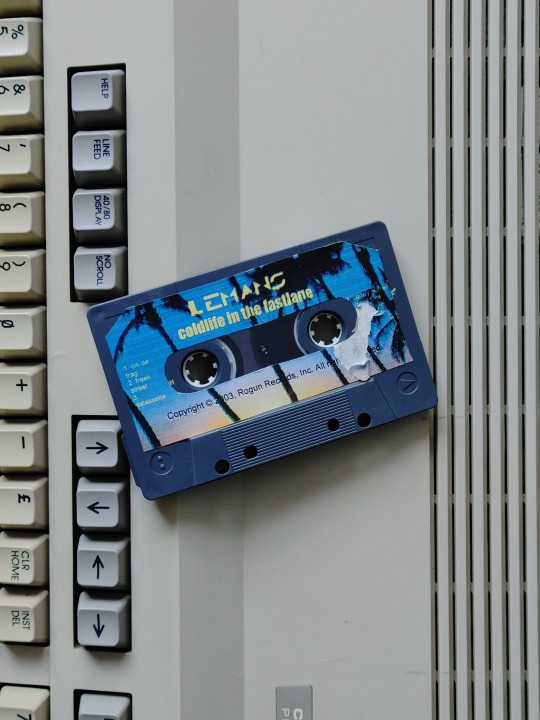
Though the initial collaboration with Holly didn't yield any finished songs, the foundations stuck. Le Mans would remain the name and a decidedly less syrupy synth diy approach would stay.
By now, the three songs I had recorded before working with Holly were getting notice in various niche scenes. This set off a number of auditions and try outs with various bands and projects. The most promising was a project comprised of a friend's boyfriend and the touring drummer of a more well know band.
One of them was obsessed with Homework era Daft Punk and the other was going more shoegaze dance-punk. Both retro electronic, but too different blend in their opinion. The project fell apart almost as soon as I found out about it. I recorded demo vocals over an aggressive French house track for one of them (never released) and I stayed with the main project through three demo records.
None of us ended up working together. The music was amazing and I wish I had their talent. It wasn't meant to be. But, my appreciation for the first Daft Punk album (as well as the early 1980s body rock electro funk and Miroder arpeggios, which it references brilliantly) was re-ignited.
So, you take all those influences and my love for everything cyberpunk, industrial-dance, and the ongoing driving/pursuit theme and you get the ingredients for the first true Le Mans song, "Citi de Frag."
Sample lyrics:
"Cat and mouse on the downtown streets...We’re awake while the city sleeps......The harsh bright light spotlights a golden haired thief"
I tried to achieve a dreamy retro-futuristic vibe with the vocals, so I delivered them via vocoder inspired by the chorus in Skinny Puppy's "Worlock". You'll notice the Miroder bass, yearning lead synth, and the drum treatment (especially on the two hits during the outro). All became staples along with nighttime pursuit themes. The streets named run through the center of downtown Los Angeles, and can literally be seen in the movie "Drive" a few years later.
The track did well on early streaming sites like mp3.com and emboldened me to flesh out an entire album. In the early days, I toyed with releasing it on the just recently laid-to-rest cassette format. But, even I felt it was too early the cassette resurgence.
Pictured above is a rough tape mockup from before even a handful of songs were finished. More on the visual aesthetic I created for Le Mans in a later post.
7 notes
·
View notes
Text
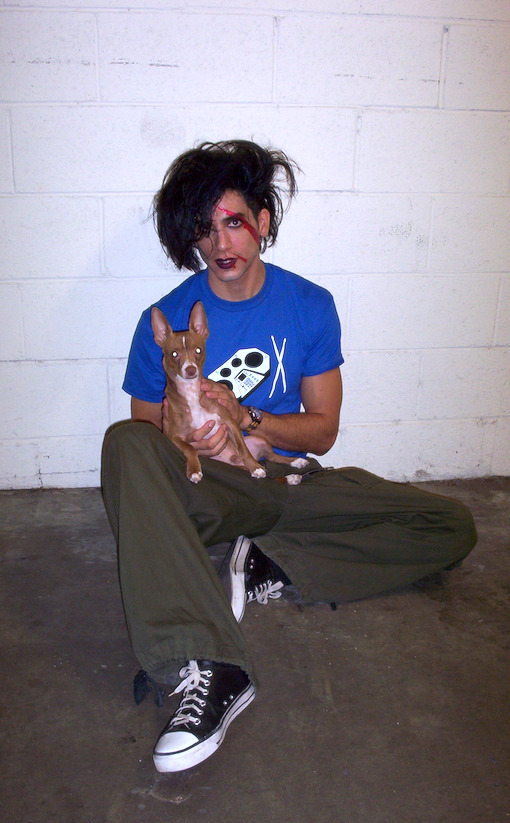
I noticed at this point that the web could showcase a re-combination of retro, present, and future. I had been uploading the afore mentioned musical ideas onto early streaming sites and thought it might be interesting to introduce certain aspects of 1980s pop culture to people who may not have lived through it. Interestingly, some of the 80s culture I referenced were things I had not experienced.
The y2k chip tunes and micro music scenes of the time featured circuit bent electronic instruments, gameboy sequencers, and 8 bit graphics. I found this intriguing as it deconstructed electronic music down to its roots--sort of second generation electronic junkyard reincarnation of Kraftwerk. Even though the instrumentation was retro, this felt like a reboot. Eschewing what electronic and synth music had become in the post-electronica era, and starting over. Fresh and new. Visceral and deceptively rudimentary.
The retro tech took centerstage in this scene. I wanted to create, as I did with SinTex, an entire world for the song stories to take place in and to inspire new plots in a generative manner. I also wanted there to be a real world feel. The low-tech unpolished vibe appealed to me. I just wanted add more human experience.
Around the same time, I regularly hung out at a store on Melrose called Blue Demon (and later Barracuda and de la Barracuda). In retrospect, an entire decade of influential synth-based musicians, promoters, and fashion creators from around the world found themselves involved with this store. It was through that store that the promoters of one of the largest retro synth music festivals of the time tracked me down to invite Le Mans to headline Chicago's Cabaret Metro in 2005.
Fun fact is that in the late 2010s, I found out my neighbor Tim, who I had known from walking our dogs around the block, was making 80s synth-based music. He was wearing a Smart Bar shirt and mentioned he had traveled to Chicago to play the intimate space underneath the Cabaret Metro. His band is The Midnight. I consider them the forefront and standard bearer of the genre's third wave/evolution.
Back to the early 2000s.
On rotation were bands like Avenue D, Peaches, Electrocute, Dirty Sanchez, etc. Their DIY sounding groove box approach and often talky drag queen style vocals appealed to me in the same way the chip tunes orchestrations did. I became friends with Holly, one of the Blue Demon staff. Upon reviewing each other's music projects, we decided to collaborate. We created a few unfinished tracks using the store's dj set up and later at a practice space in what is now the "Arts District" and as of a couple years ago, the new home of Warner Brothers records. Since most of the bands we were fans of were openly gay, we thought it would be exotic to portray a novel-within-the-scene hetero viewpoint.
It was Holly who named the band. First he wanted to call it "Jamisin", but that felt kinda cringe as I prefer not being the focal point of a project. He drove an old 1970s Pontiac Le Mans and as we were standing next to it one day, he offered as his second choice, "Le Mans". Obviously, it stuck as I wanted to continue the 'driving' through line that had existed in my previous music. I wanted to add vintage cars, motorcycles, and all kinds of 1980s action television and movie aesthetics to the Le Mans lexicon so the name fit perfectly. It is a Commodore 64 vintage computer game, a Steve McQueen racing movie, mistranslates to "The Mans", and implies a French aesthetic.
1 note
·
View note
Text
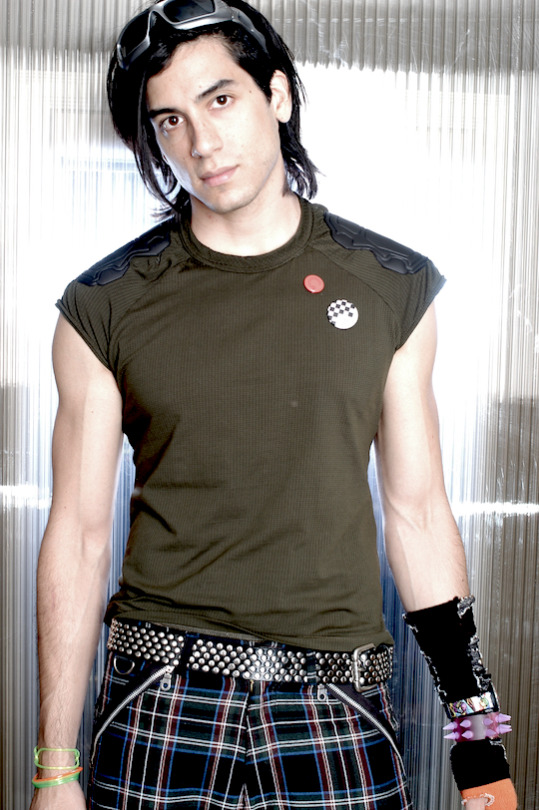
A couple years into SinTex, country music started to gain mass appeal (similar to how it did in 2024 and also the late 1970s), so I chose to end the project (until its resurrection restoration 25 years later) in fears of looking like I was jumping on the haywagon.
During the mid-late 1990s, I worked in artist development and music marketing at record labels whose rosters included bands I listened to, such as Bauhaus, Love and Rockets, Peter Murphy, and My Life with the Thrill Kill Kult. But, I was also introduced to the likes of Cheap Trick, Lit, Sunz of Man, Chick Corea, and Wesley Willis!
This career brought me to Los Angeles where I continued to enjoy various dark synthesizer-based genres and wrote music in multiple styles. The solo music I recorded during this time ranged from folk, to dungeon wave, to "electronica". And by about 2002 I landed on kind of a synth pop with hip hop beats talky spooky vocals (using the same Yamaha CS1X I acquired for SinTex).
Funnily in retrospect, two of the three songs did involve driving at night. One featured vampire street racing which was probably inspired by a goth street racer role in an unreleased feature film. The second was about a vampire hunter in a big rig at first but as my aesthetics changed, I switched it to a Ford Mustang. The third track was about assessing one's life while walking under buzzing neon lights--I did most of my lyric writing while sitting in Los Angeles' Chinatown afterhours.
As you can see in this photo taken during the end of that liminal artistic period, there was a little of everything in the mix. I wasn't really satisfied because, while all of the music was unique and creative, it didn't feel "groundbreaking" enough and didn't quite offer the potential world-building aspect that I felt I almost achieved a few years back with the SinTex project.
0 notes
Text
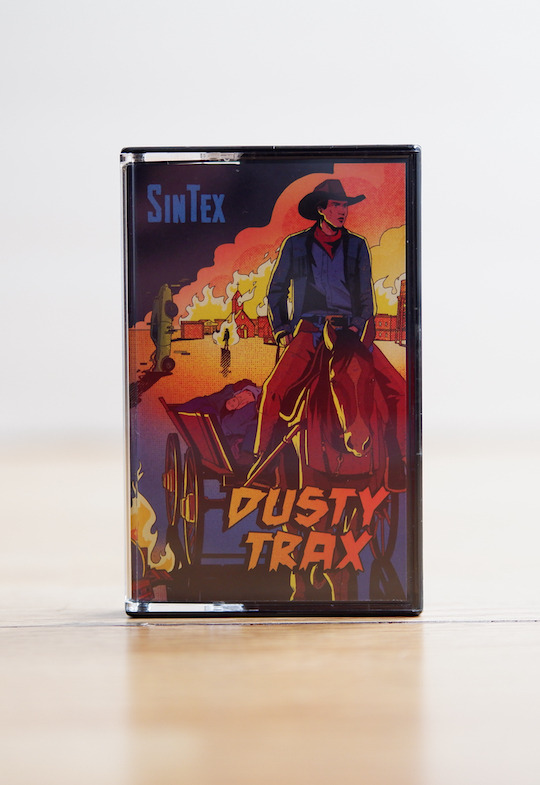
My first world building music project and the predecessor of Le Mans is a dark country western project called SinTex. Shown here is the 2024 cassette release of those original songs tracked just before y2k. The songs were based on two cowboys caught in a time glitch during the apocalypse. This time it was a 1970s muscle car instead of a the DeLorean, but the synths had already entered the mix as they had just become an important part of my arsenal.
#western gothic#gothic western#dark wave#goth#cassette#yeemo#yallternative#illustration#country#y2k#tape
0 notes
Text
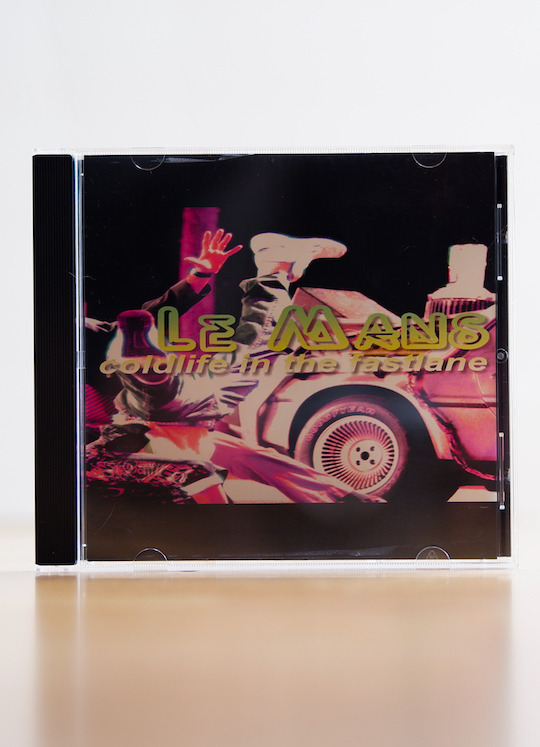
As the 20th anniversary year of Le Mans' "Coldlife in the Fastlane" CD hits its bridge, I will be posting specifics on how each piece of the bucket list retrowave and synthwave themes came to be in Le Mans music and aesthetic during the years before its 2004 release date. So hop in the DeLorean time machine and we'll start at about Y2K.
#retrowave#synthwave#2000s#indiesleeze#electroclash#1980s#futurepop#vhs aesthetic#le mans#delorean#electro
2 notes
·
View notes
Text
One of the few remaining interviews from the beginning of the Jamisin Leon Kennedy era in the CGI feature films and retro video games.
#resident evil#jamisin#Jamisin matthews#biohazard#leonkennedy#Leon Kennedy#animation#retro gaming#anime#fandom#videogame#residentevildegeneration#mobcap#performance capture#residentevildatabase
2 notes
·
View notes
Text
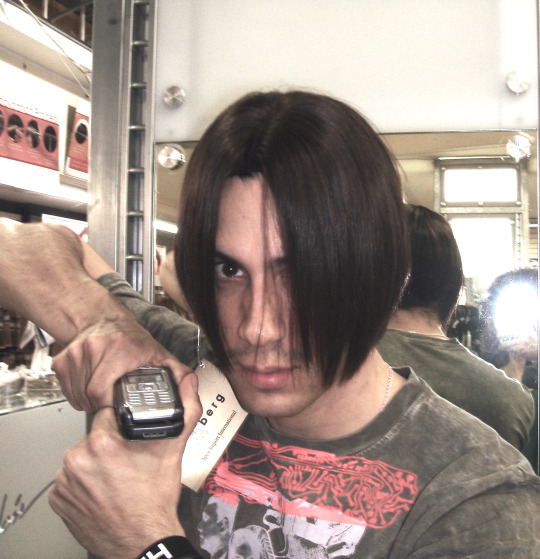
2007 Posing with the best mini-laptop-style phone ever in a last ditch effort to Not have to color and cut my real hair in Capcom's first attempt at booking me as Leon for the Resident Evil Nintendo Wii port live-action promos.
#2000s#resident evil 4#re4#biohazard#degeneration#nintendowii#Wii#retro phone#leonkennedy#Leon s Kennedy#retrogaming#emo#retro technology#vintage phone#nintendo#Jamisinmatthews#Jamisin Matthews
5 notes
·
View notes